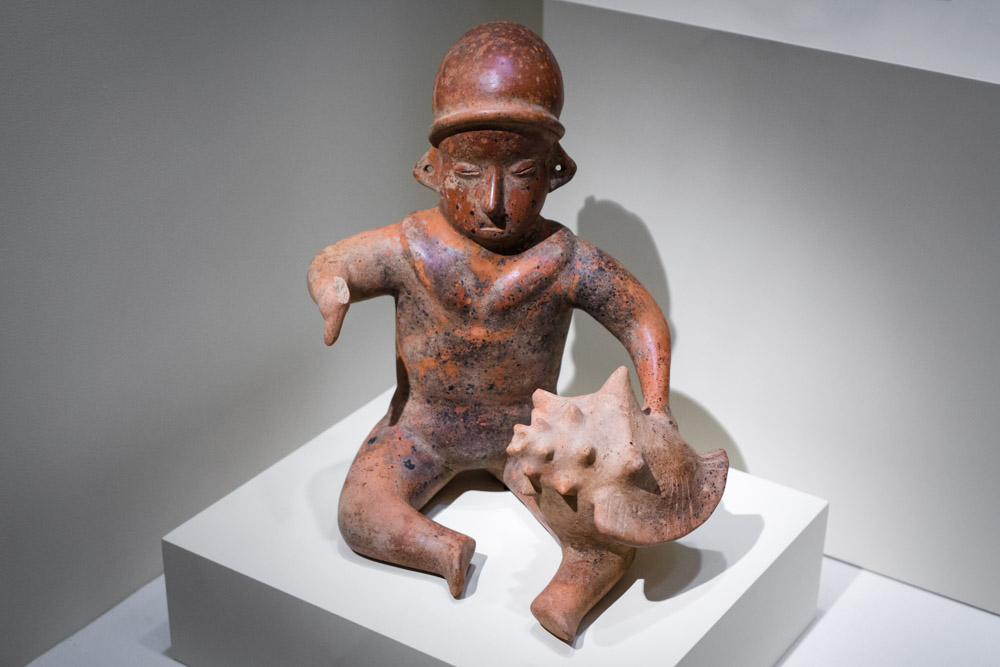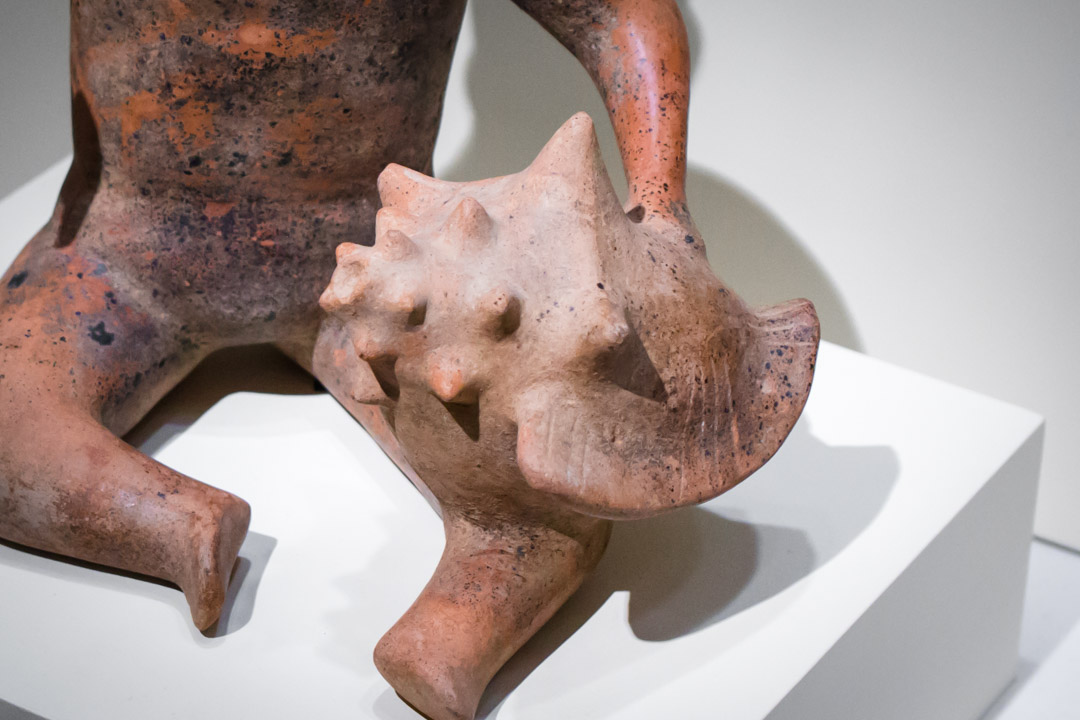Object of the Week: Seated Figure with Conch Shell

Some historic cultures have made learning about them easy for us by producing the things they did. The size and significance of their monuments or the influence of their visual art and literature make sure that these people are known and remembered. Other cultures have left a quieter presence that requires investigating, digging, researching, and lots of thinking about relatively few objects. To me, these cases are all the more amazing because they show us how much we can learn with only a little bit to go on.
SAM’s Seated figure with conch shell (ca. 300 B.C.–A.D. 400) hails from one of these materially quiet cultures: early Colima, in West Mexico. The state of Colima, with its capital city also called Colima, lies straight West of Mexico City, and its landscape is dominated by the Volcán de Colima—or the Volcán de Fuego—one of the most active volcanoes in Central America.
Scholars in Pre-Columbian (before Europeans arrived) Mesoamerica (a region and grouping of indigenous cultures in what is now southern Mexico and northern Central America) have learned much of what they know about cultures in West Mexico from figures like this one. Unlike other regions of Mexico that are visibly marked by Aztec temple complexes and monumental stone sculptures, West Mexico has left today’s art historians much smaller mementos. In Colima, specifically, ceramic figures are the most common form of material culture to survive. A lot of these were found in burial tombs, so they likely had a significant place in the Colima people’s vision of the afterlife.
In SAM’s figure, the forms are essentialized and rounded. The facial features are simple shapes: a long, angular nose; oval, protruding eyes with slits across the middle that look a lot like coffee beans. Triangular ears point outwards from the sides of his head. The circular holes at their centers seem primed for functional use; maybe he once donned a pair of colorful earrings? He has a small mouth with lips turned down slightly, suggesting the seriousness of his role. The figure’s coloring comes from a slip with red pigment applied to the figure by its maker, and the black spots are patina. The all-over smoothness was accomplished by rubbing a stone along the clay surface.

The conch shell has special importance to our understanding of this figure and to early Colima, where shell trumpets would sound to mark special ceremonies and community events. The conch also seems to have symbolized wealth and status, and that might have developed from people associating it with these important happenings.
Oh, and that’s a big damn shell! It’s enormous compared to the figure. It matches the length of his torso and has significantly more volume. Why is it so big? Maybe the people in early Colima found really huge conch shells. Maybe the scale is meant to emphasize the importance of the conch shell in the life of the community, with its role extending from important moments in life to the eternity of death. I wonder, too, if the scale suggests something about the size of the figure, meaning that this was a small person—even a child? Personally, I like that reading because it fits with the figure’s relaxed, kind of undignified pose. Imagine he’s just learning to play his shell trumpet, and he’s the figure someone picks to accompany you to the afterlife!
—Jeffrey Carlson, SAM Collections Coordinator